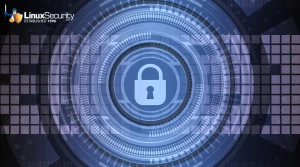Recent OpenSSH RCE Bug Explained: Impact & Mitigations

In an era where cybersecurity threats loom larger than ever, the discovery of a Remote Code Execution (RCE) vulnerability in OpenSSH by Qualys’ Threat Research Unit (TRU) demands the open source community's immediate attention. Dubbed as "regreSSHion" and assigned the identifier CVE-2024-6387, this vulnerability stands out not merely because of its potential to enable unauthenticated, remote attackers to execute arbitrary code as root, but also due to its broad impact, affecting millions of OpenSSH server instances globally.
In this article, I'll dissect the regression vulnerability, explain its mechanics and scope of impact, and offer mitigation strategies to help you secure your systems against this critical threat.
Understanding the regreSSHion Vulnerability
 OpenSSH (or Open Secure Shell) is a collection of secure networking utilities built upon the Secure Shell (SSH) protocol. It provides encrypted communication over untrusted networks. Commonly deployed for server management and data transmission over remote servers, OpenSSH focuses on keeping network communications confidential while upholding global integrity.
OpenSSH (or Open Secure Shell) is a collection of secure networking utilities built upon the Secure Shell (SSH) protocol. It provides encrypted communication over untrusted networks. Commonly deployed for server management and data transmission over remote servers, OpenSSH focuses on keeping network communications confidential while upholding global integrity.
RegreSSHion highlights an alarming flaw in OpenSSH's security mechanism. Specifically, a signal handler race condition within its server component (sshd) impacts Linux systems that utilize glibc as their basis. This flaw enables an unauthenticated attacker to gain root-level code execution without authentication, rendering this race condition especially severe given SSH's root-level access capabilities, which could compromise an entire system.
What Is the Scope & Impact of This Vulnerability?
The discovery by Qualys echoes alarmingly across the cyber sphere, with over 14 million potentially vulnerable OpenSSH server instances identified online. Qualys estimates that about 700,000 internet-facing instances remain vulnerable, roughly representing 31% of all the cases analyzed in its global customer base. This vulnerability, by enabling root access to attackers, could facilitate a comprehensive system takeover, installation of malware, data manipulation, and, even more disconcertingly, the creation of backdoors for sustained unauthorized access. The potential for significant data breaches and the resultant theft or leak of sensitive or proprietary data only adds to the severity of its impact.
Mitigation Strategies
Linux admins and organizations using OpenSSH can mitigate the risk of this bug and similar threats by engaging in the following best practices:
Immediate Patching
First and foremost, organizations must prioritize patching their systems. OpenSSH versions before 4.4p1 are vulnerable unless patched for CVE-2006-5051 and CVE-2008-4109. Versions from 4.4p1 up to, but excluding, 8.5p1 are secure; however, the vulnerability reappears in versions from 8.5p1 up to, but excluding 9.8p1. Administrators should upgrade to a secure version immediately to mitigate this vulnerability.
Enhanced Access Control
Limiting SSH access through network-based controls significantly reduces the attack surface. Organizations can minimize the risk of unauthorized access attempts by implementing tight restrictions on which entities can initiate SSH connections.
Network Segmentation and Monitoring
Adopting network segmentation restricts lateral movements within an environment, making it harder for attackers to find and exploit vulnerable systems if they gain access. Furthermore, deploying intrusion detection systems can help monitor and alert admins and IT teams of unusual activities indicative of exploitation attempts.
Our Final Thoughts on This OpenSSH Flaw
The revelation of the regreSSHion vulnerability within OpenSSH underscores a crucial reminder about the importance of rigorous regression testing and the continuous need for vigilance in cybersecurity defense practices. While the complexity of the exploit might buffer against widespread exploitation temporarily, it's a stark reminder of the cyclical nature of security vulnerabilities and the persistent ingenuity of threat actors. For Linux admins and cybersecurity teams globally, the discovery of CVE-2024-6387 calls for immediate and decisive action to patch and protect vulnerable systems, ensuring the security and integrity of their digital environments.






















